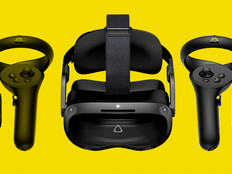An often-heard lament from parents and teachers is that kids these days don’t get enough exercise, tethered as many are to their handheld electronic devices and video games.
Help is on the way, however, from an unlikely source. Ironically, the tech that could get kids moving is the same thing that promotes their sedentary state: video games.
Video Games as Physical Education
Virtual reality technology, which turns users into active participants, is dramatically changing the way kids play video games. In a VR game, a user can play a sport or dance as part of the game — which means they actually move their body, not just their pupils and thumbs.
Many K–12 teachers and schools have begun to introduce exercise-friendly VR games in the classroom or at school events.
In May last year, Valley Day School in Morrisville, Pa., became the first in the country to install a high-tech, state-of-the-art virtual gym, complete with camera sensors and stereo sound, 3D projectors and other gaming accessories, according to Philadelphia’s ABC news affiliate, WPVI-TV.
Jim Romano, Valley Day’s Health and Physical Education instructor, said the immersive VR setup transforms PE class into a “life-size video game” for the students.
Improving the level of physical activity in children through VR-based games is welcome news for parents and educators because video games have been singled out as a main culprit responsible for the plummeting levels of physical activity among children. The Centers for Disease Control and Prevention notes that 1 out of 6 children and teenagers in the country are obese.
“In 2014, the CDC identified hours playing video games as one of the risk factors for low physical activity in the United States,” notes the Virtual Reality Institute of Health and Exercise.
But adding VR to the PE mix flips this scenario on its head.
“… the inherent movement in virtual reality and augmented exercise make it possible that video games may soon be a positive contributor to physical fitness, not its enemy. And the popularity of video games as one of the world’s most sustained and growing pastimes may make it a great ally for those that traditionally struggle with staying fit,” states the Institute.
VR Exercise Games Tackle Obesity and Aid the Disabled
The general public is also looking more at using VR games to boost exercise, according to The New York Times.
Some people have injuries or disabilities that prevent them from traditional forms of exercise, and anecdotal evidence suggests that VR video games with an exercise component can help them maintain their fitness levels.
A 2019 study by the Journal of Special Education Technology called such games “a promising tool” to help kids achieve the recommended minimum daily amount of 30 minutes of moderate physical activity.
Among the more popular games are Oculus Quest’s Beat Sabre, Box VR, The Thrill of the Fight, SoundBoxing and Holopoint, to name a few.
Another study cited in the journal’s study noted that “physical activity is a key factor in preventing health problems that result from leading a sedentary lifestyle and can positively impact the health, fitness, and behavior of adults and youth.”
The Virtual Reality Institute of Health and Exercise and the Kinesiology department at San Francisco State University have teamed up to develop the VR Health Exercise Tracker “built on hundreds of hours of VR-specific metabolic testing using research-grade equipment.” The tracker collects metabolic data, including number of calories burned.
A good personal computer, VR headset (ranging in price from $350 to $800) and 6 square feet in which to move around are all a user needs to play these video fitness games, reported CNN.
That means K–12 institutions can easily make space for gamers and spur students to get off their mobile phones and tablets — and students won’t even realize they are exercising.










